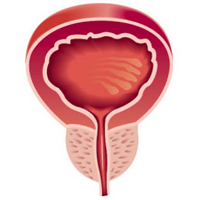The role of MRI in the detection of local recurrence: Added value of multiparametric approach and Signal Intensity/Time Curve analysis

Accepted: August 25, 2021
All claims expressed in this article are solely those of the authors and do not necessarily represent those of their affiliated organizations, or those of the publisher, the editors and the reviewers. Any product that may be evaluated in this article or claim that may be made by its manufacturer is not guaranteed or endorsed by the publisher.
Authors
Objective: The aim of the study was to evaluate the accuracy of multiparametric Magnetic Resonance Imaging (mpMRI) in the detection of local recurrence of prostate cancer (PCa) with the evaluation of the added value of signal Intensity/Time (I/T) curves.
Materials and methods: A retrospective analysis of 22 patients undergoing mpMRI from 2015 to 2020 was carried out, with the following inclusion criteria: performing transrectal ultrasound guided biopsy within 3 months in the case of positive or doubtful findings and undergoing biopsy and/or clinical follow-up for 24 months in the case of negative results. The images were reviewed, and the lesions were catalogued according to morphological, diffusion-weighted imaging (DWI) and dynamic contrast- enhanced (DCE) features.
Results: The presence of local recurrence was detected in 11/22 patients (50%). Greater diameter, hyperintensity on DWI, positive contrast enhancement and type 2/3 signal I/T curves were more frequently observed in patients with local recurrence (all p < 0.05). Of all the sequences, DCE was the most accurate; however, the combination of DCE and DWI showed the best results, with a sensitivity of 100%, a specificity of 82%, a negative predictive value of 100% and a positive predictive value of 85%.
Conclusions: The utility of MRI in the detection of local recurrence is tied to the multiparametric approach, with all sequences providing useful information. A combination of DCE and DWI is particularly effective. Moreover, specificity could be additionally improved using analysis of the signal I/T curves.
How to Cite
PAGEPress has chosen to apply the Creative Commons Attribution NonCommercial 4.0 International License (CC BY-NC 4.0) to all manuscripts to be published.

 https://doi.org/10.4081/aiua.2022.1.25
https://doi.org/10.4081/aiua.2022.1.25



